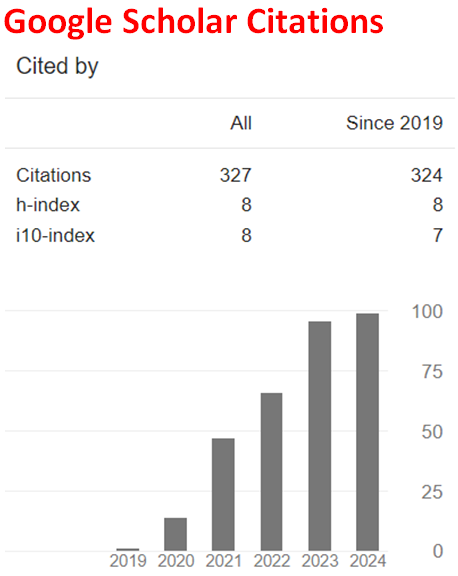A novel transamination reaction in a murexide-like sequence for caffeine detection
Abstract
This communication is a theoretical organic chemistry study on the Hammarsten test for caffeine. He used chlorine water and ammonium hydroxide; a violet colour indicates presence of caffeine. Since a derivative of ammonium purpurate is formed, the assay has been considered a murexide test. However, there are several important variants. The original murexide test for uric acid employs diluted nitric acid; the five-member ring in uric acid molecule is an imidazolone whereas in caffeine it is an imidazole. This difference alters the reaction starting site. Uric acid has no substituents, caffeine presents three methyl groups. The methyl al N-7 is an impediment for purpuric acid formation since a primary amine is required in order to react with a carbonyl group and form a double bond. So, assisted ammonolysis is invoked since ammonium purpurate is formed. This chemical deportment is explained by reaction of the methylamine at N-7 with the very reactive central carbonyl group in alloxan. A concerted mechanism takes place: ammonia displaces the nitrogen of the hemiaminal, a nitrogen-carbon double bond is formed with concomitant separation of hydroxyl ion. The methylimino group at alloxan is hydrated and protonation of the carbinolamine restores alloxan molecule and separation of methylamine.
Downloads
References
Caffeine. Retrieved from https://betterhealth.vic.gov.au>caffeine
Caffeine. National Library of Medicine https://pubchem.ncbi.nlm.nih.gov>caffeine
Coffee plant https://www.geeksforgeeks.org/botanical-name-of-coffee-plant
Sánchez-Viesca, F., & Gómez, R. (2024). A complete and sustained organic/inorganic reaction mechanism of Baeyer’s test. World Journal of Chemical and Pharmaceutical Sciences, 04(02), 001-005. https://doi.org/10.53346/wjcps.2024.4.2.0023
Sánchez-Viesca, F., & Gómez, R. (2024). On the formation of oxydimorphine (pseudomorphine, 2,2’-bimorphine). Magna Scientia Advanced Research and Reviews, 10(02), 146-149. https://doi.org/10.30574/msarr.2024.10.2.0053
Sánchez-Viesca, F., & Gómez, R. (2024). On the mechanism of Siebold’s test for morphine. International Journal of Chemical and Pharmaceutical Research Updates, 02(01), 010-013. https://doi.org/10.53430/ijcpru.2024.2.1.0021
Sánchez-Viesca, F., & Gómez, R. (2023). The mechanism of Frabot test for uric acid. Earthline Journal of Chemical Sciences, 10(1), 125-130. https://doi.org/10.34198/ejcs.10123.125130
Sánchez-Viesca, F., & Gómez, R. (2023). The mechanism of Hager’s test for glucose. International Journal of Advances in Chemical Research, 5(1), 47-49. https://doi.org/10.33545/26646781.2023.v5.i1a.143
Johnson, C.A. & Thornton-Jones, A.D. (1966). Drug identification (p. 48). London: The Pharmaceutical Press.
Cohn, A-I. (1903). Tests and reagents (p. 118). New York: John Wiley & Sons.
Gattermann, L. (1957). Laboratory methods of organic chemistry (p. 136). London: Macmillan.
Vitoria, E. (1953). Prácticas químicas (7a. ed., p.522). Barcelona: Casals.
Murexide. National Institute of Standards and Technology https://webbook.nist.gov>cbook-murexide
Lange, N.A. (1961). Handbook of chemistry (10th ed., p. 352). New York: McGraw-Hill.
Millar, I.T. & Springall, H.D. (1969). A shorter Sidgwick’s organic chemistry of nitrogen (pp. 167-168). Oxford: Clarendon.
Breslow, R. (1965). Organic reaction mechanisms (p. 184). New York: Benjamin.
Sánchez-Viesca, F., & Gómez, R. (2019). On the mechanism of the murexide reaction. World Journal of Organic Chemistry, 7(1), 14-18. https://doi.org/10.12691/wjoc-7-1-3
Hine, J. (1956). Physical organic chemistry (p. 343). New York: McGraw-Hill.
Sykes, P. (1967). Mechanism in organic chemistry (p. 107). London: Longmans.
Barnett, E.B. (1957). Mechanism of organic chemical reactions (p. 53). New York: Interscience.

This work is licensed under a Creative Commons Attribution 4.0 International License.


